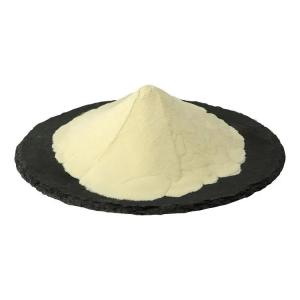News list
News Center
Hot Product
News
Phosphoric acid and nutrient absorption discussions
Time:2025-10-20
1. Introduction
Phosphoric acid, a widely used compound in food processing and preservation, plays a complex role in nutrition and nutrient absorption. While it contributes to flavor enhancement and product stability, its interactions with minerals and other nutrients have drawn attention in the context of balanced nutrition. Understanding these interactions is essential for ensuring that food design and dietary habits promote effective nutrient utilization.
2. Chemical Characteristics and Food Applications
Phosphoric acid (H₃PO₄) is a colorless and odorless acid with moderate strength and high solubility in water. It is used in carbonated beverages, dairy processing, and baked products as an acidity regulator, preservative, and stabilizer. Its inclusion in food systems helps maintain pH, prevent spoilage, and improve texture. Beyond these technical roles, it is also a source of phosphorus, an essential element in human metabolism.
3. Phosphorus as a Nutrient Element
Phosphorus, derived from phosphoric acid and its salts, is an important component of bones, teeth, cell membranes, and nucleic acids. It plays a vital role in energy metabolism, particularly in the formation of adenosine triphosphate (ATP). In natural diets, phosphorus is found in dairy products, grains, meat, fish, and legumes. However, the bioavailability of phosphorus can vary depending on its chemical form and food source.
4. Interactions with Mineral Absorption
One of the key discussion points regarding phosphoric acid is its influence on the absorption of other minerals such as calcium, magnesium, and iron. The balance between phosphorus and calcium, in particular, is critical for maintaining bone health and metabolic stability. Excessive intake of inorganic phosphates from processed foods or beverages may alter this balance, potentially reducing calcium utilization. This emphasizes the importance of considering phosphorus sources when evaluating overall nutrient absorption efficiency.
5. Dietary Balance and Food Formulation
From a dietary design perspective, the inclusion of phosphoric acid in foods should be managed carefully. In moderation, it supports food safety and contributes to flavor consistency. However, for optimal nutrient absorption, dietary patterns should favor whole foods rich in naturally balanced minerals. Food technologists can use phosphoric acid strategically while maintaining proper nutrient ratios, supporting both product quality and nutritional value.
6. Ongoing Research and Nutritional Insights
Current nutritional discussions focus on understanding how various forms of phosphorus affect bioavailability and absorption rates. Researchers are exploring how different dietary sources, processing methods, and pH conditions influence the uptake of minerals. These insights guide food industry practices and dietary recommendations toward more sustainable and health-conscious use of phosphoric acid in food systems.
7. Conclusion
Phosphoric acid serves as both a functional ingredient in food processing and a source of essential phosphorus. Its relationship with nutrient absorption highlights the importance of dietary balance and ingredient awareness. By integrating scientific understanding into food formulation and consumption habits, it is possible to optimize nutrient absorption while maintaining the benefits phosphoric acid provides in modern nutrition and food technology.
Phosphoric acid, a widely used compound in food processing and preservation, plays a complex role in nutrition and nutrient absorption. While it contributes to flavor enhancement and product stability, its interactions with minerals and other nutrients have drawn attention in the context of balanced nutrition. Understanding these interactions is essential for ensuring that food design and dietary habits promote effective nutrient utilization.
2. Chemical Characteristics and Food Applications
Phosphoric acid (H₃PO₄) is a colorless and odorless acid with moderate strength and high solubility in water. It is used in carbonated beverages, dairy processing, and baked products as an acidity regulator, preservative, and stabilizer. Its inclusion in food systems helps maintain pH, prevent spoilage, and improve texture. Beyond these technical roles, it is also a source of phosphorus, an essential element in human metabolism.
3. Phosphorus as a Nutrient Element
Phosphorus, derived from phosphoric acid and its salts, is an important component of bones, teeth, cell membranes, and nucleic acids. It plays a vital role in energy metabolism, particularly in the formation of adenosine triphosphate (ATP). In natural diets, phosphorus is found in dairy products, grains, meat, fish, and legumes. However, the bioavailability of phosphorus can vary depending on its chemical form and food source.
4. Interactions with Mineral Absorption
One of the key discussion points regarding phosphoric acid is its influence on the absorption of other minerals such as calcium, magnesium, and iron. The balance between phosphorus and calcium, in particular, is critical for maintaining bone health and metabolic stability. Excessive intake of inorganic phosphates from processed foods or beverages may alter this balance, potentially reducing calcium utilization. This emphasizes the importance of considering phosphorus sources when evaluating overall nutrient absorption efficiency.
5. Dietary Balance and Food Formulation
From a dietary design perspective, the inclusion of phosphoric acid in foods should be managed carefully. In moderation, it supports food safety and contributes to flavor consistency. However, for optimal nutrient absorption, dietary patterns should favor whole foods rich in naturally balanced minerals. Food technologists can use phosphoric acid strategically while maintaining proper nutrient ratios, supporting both product quality and nutritional value.
6. Ongoing Research and Nutritional Insights
Current nutritional discussions focus on understanding how various forms of phosphorus affect bioavailability and absorption rates. Researchers are exploring how different dietary sources, processing methods, and pH conditions influence the uptake of minerals. These insights guide food industry practices and dietary recommendations toward more sustainable and health-conscious use of phosphoric acid in food systems.
7. Conclusion
Phosphoric acid serves as both a functional ingredient in food processing and a source of essential phosphorus. Its relationship with nutrient absorption highlights the importance of dietary balance and ingredient awareness. By integrating scientific understanding into food formulation and consumption habits, it is possible to optimize nutrient absorption while maintaining the benefits phosphoric acid provides in modern nutrition and food technology.


 CN
CN





